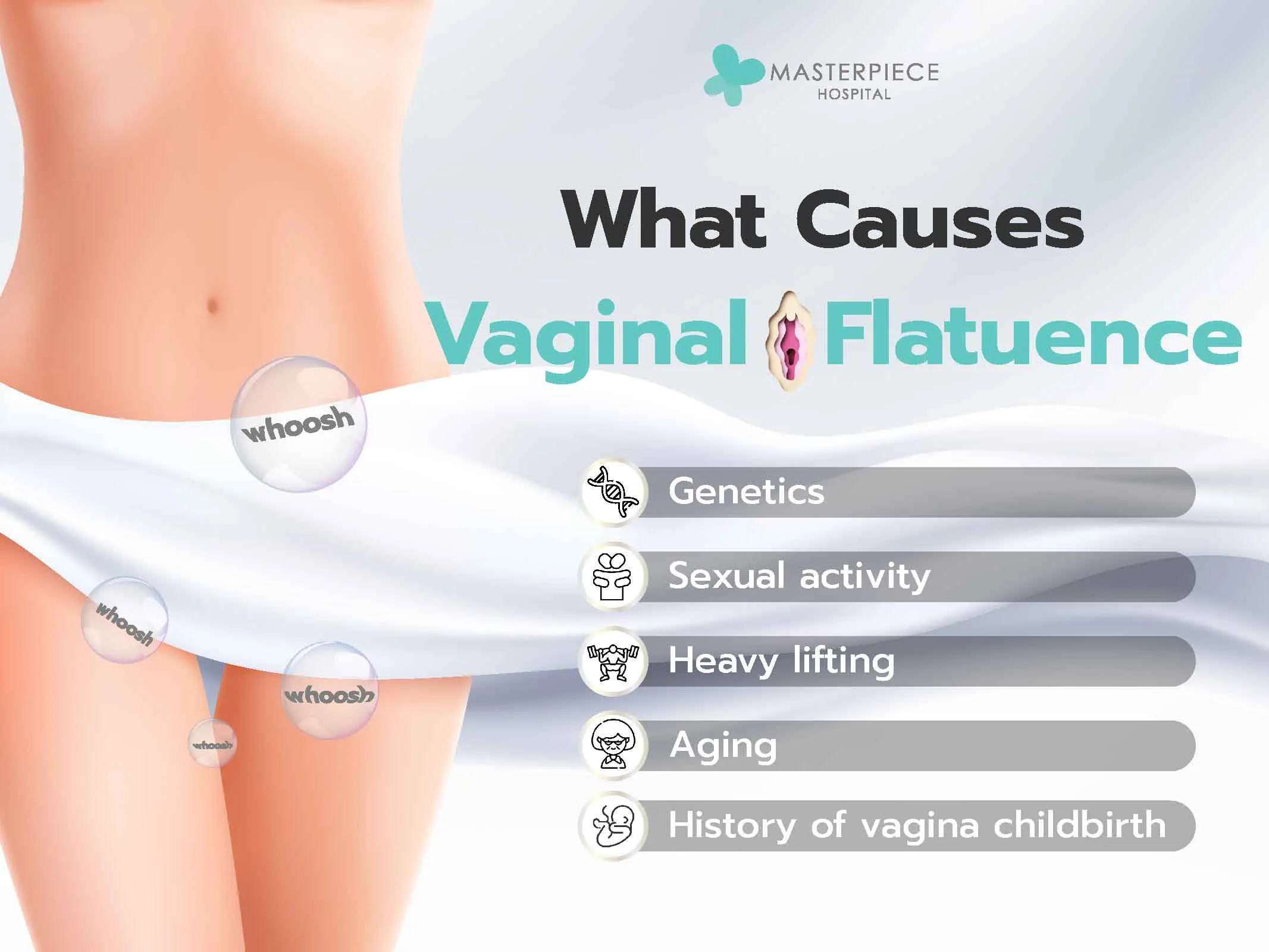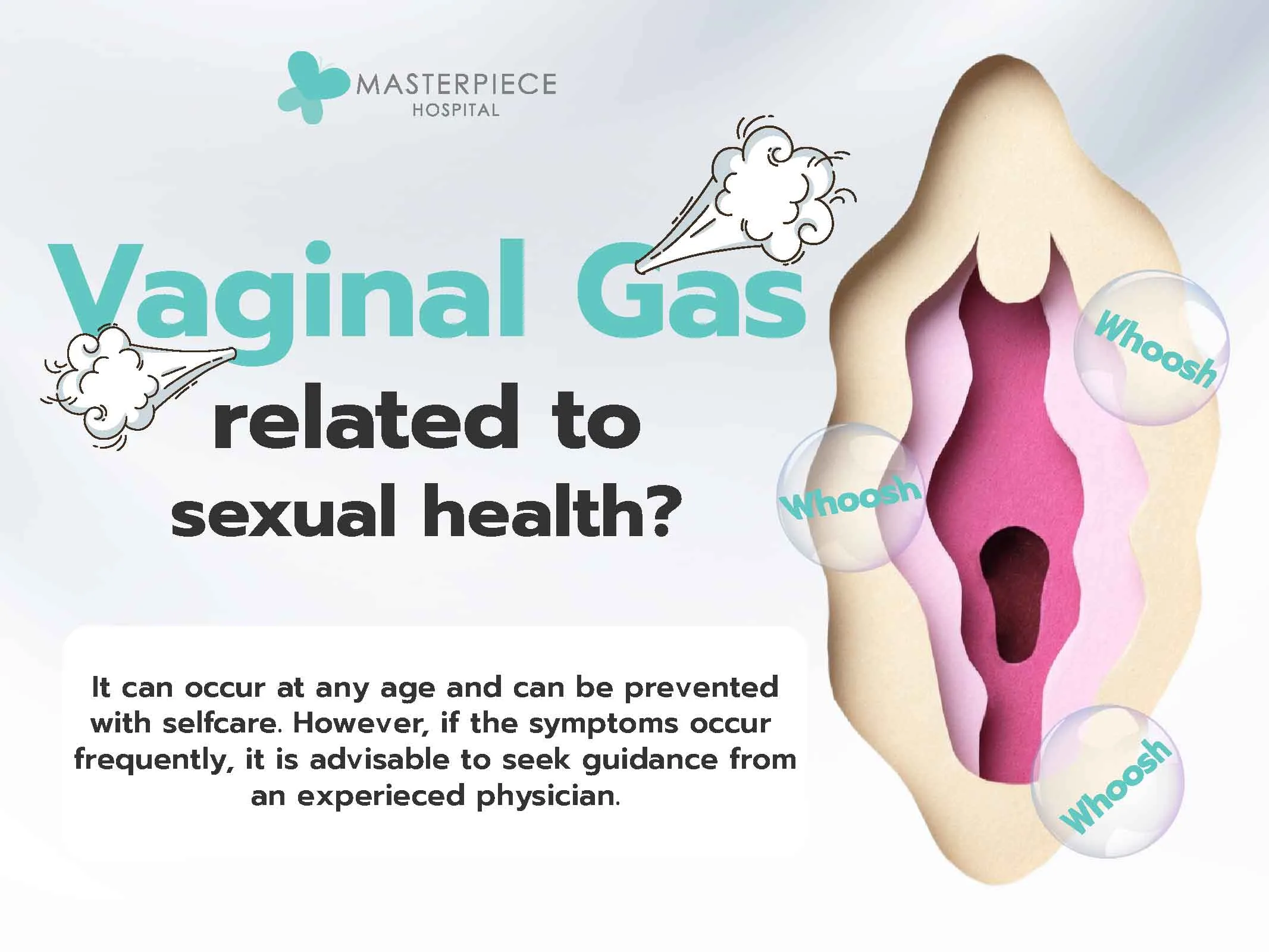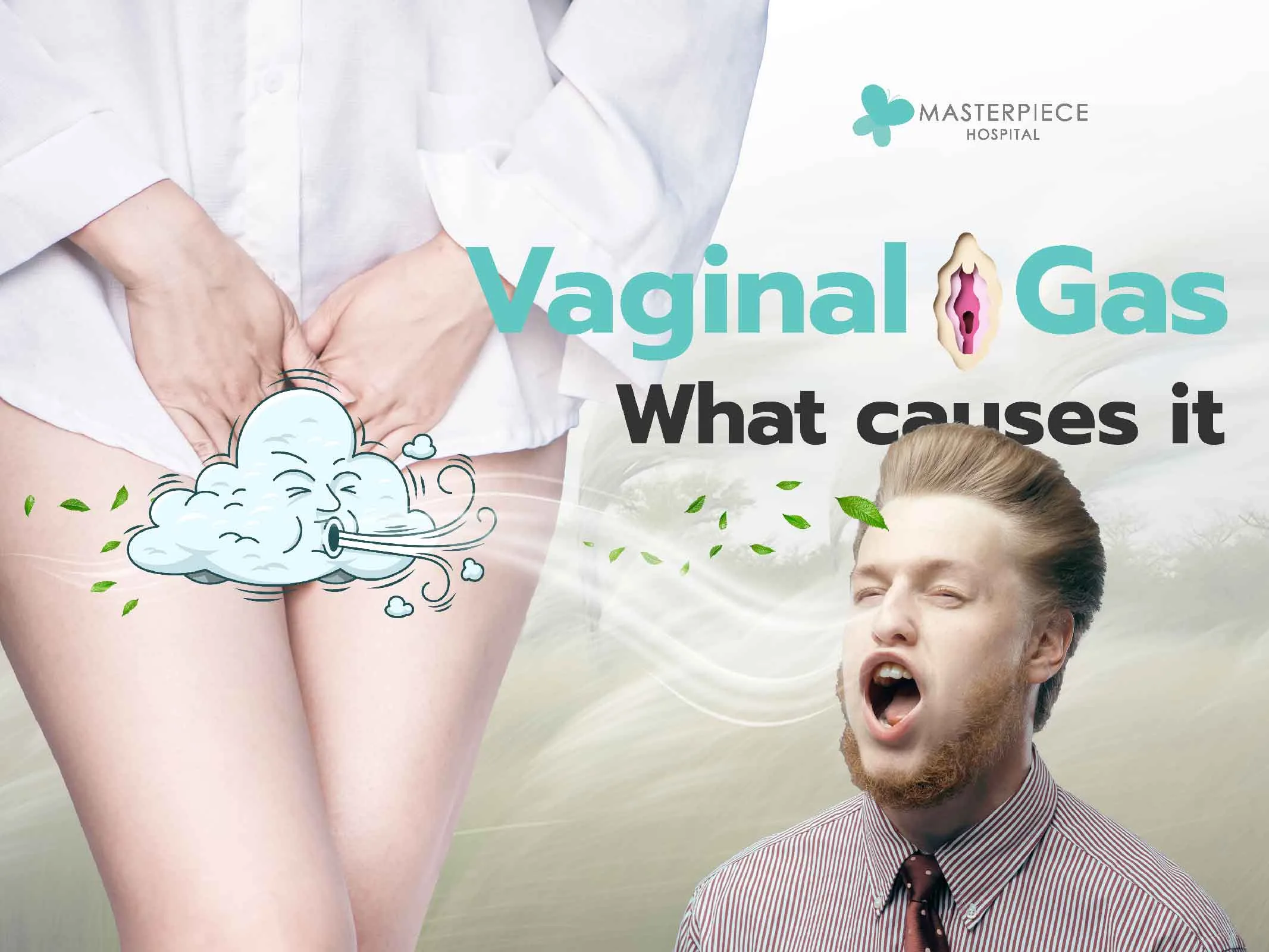Vaginal Gas: causes of Vaginal Flatulence and treatment methods
Vaginal Gas or Vaginal Laxity often produces a sound similar to air escaping from the vagina, which can cause embarrassment for many women. Most cases are caused by a lack of pelvic floor muscle elasticity. There is no need to worry too much, as there are many ways to address this issue, including self-care and medical procedures.

What causes Vaginal Flatulence (Vaginal Gas)?
Problems in the intimate area, such as vaginal gas or air escaping from the vagina, can occur for several reasons, as follows:
- Genetics: Can cause the vagina to be lax from birth.
- Sexual activity: During sexual activity, air pressure may enter the vagina, causing vaginal gas.
- Heavy lifting or exercise: Certain movements that contract and relax the pelvic floor, such as squats or sit-ups, can cause it.
- Sudden change in posture: Bending or twisting suddenly may allow air to move through the vagina.
- Aging: Can lead to deterioration of the pelvic floor muscles.
- History of vaginal childbirth: Natural delivery may cause pelvic floor muscles to become lax.

Is Vaginal Gas or Vaginal Flatulence a sign of vaginal laxity?
Vaginal Gas or Vaginal Flatulence are conditions that occur only in women, referred to as vaginal laxity. They can result from several causes, such as frequent sexual activity, natural childbirth, or heavy exercise, which may produce a sound similar to passing gas, but the sound comes from the vagina instead.
Vaginal laxity may cause discomfort or embarrassment. If symptoms occur frequently, it is recommended to consult an experienced doctor to find a suitable treatment approach for each individual.

Is Vaginal Gas related to sexual health?
Problems such as Vaginal Gas or vaginal laxity may be related to physical health but are not considered dangerous. They can occur naturally at any age and can often be prevented with self-care. However, if the symptoms happen frequently, it is recommended to seek advice from an experienced doctor to explore appropriate treatment options.

How to treat Vaginal Gas or Vaginal Flatulence
Vaginal Gas or Vaginal Flatulence can be treated in two ways: self-care methods and medical procedures, as follows.
Self-care for Vaginal Gas
- Practice vaginal tightening (Kegel exercises) about 1–10 times per day to help tighten the vaginal muscles and reduce the chance of Vaginal Gas.
- Do pelvic floor exercises to strengthen and firm the muscles, which helps solve the problem of looseness.
- Avoid rough sexual intercourse, as it may trap a large amount of air inside the vagina.
Medical treatments for Vaginal Gas
Doctors usually recommend 3 methods to treat Vaginal Gas: Vaginal Tightening Surgery (Repair), Vaginal Filler Injection, and Emsella Chair. Each method has its own advantages:
- Vaginal Tightening Surgery (Repair)
This procedure helps tighten the vagina, treat vaginal looseness, and reduce the chance of Vaginal Gas. It can also improve intimacy between partners.
- Vaginal Filler Injection
The filler used is a synthetic substance that naturally dissolves over time, making it safe for intimate areas. It helps tighten and firm the vagina, but the effect typically lasts only 6 months to 1 year. For the best results, regular repeat injections are recommended.
- Emsella Chair
The Emsella Chair is an FDA-approved technology with high safety standards. It treats pelvic floor muscle weakness, Vaginal Gas, urinary incontinence, and more. It uses High-Intensity Focused Electromagnetic (HIFEM) technology to stimulate rapid muscle contractions in the pelvic floor, similar to Kegel exercises but far more effective.

Consultation for Vaginal Gas
Masterpiece Hospital offers more than 10 specialized procedures and provides free consultations with experienced doctors. If you are experiencing Vaginal Gas or vaginal looseness, you can contact Lady Care by Masterpiece Hospital for more information.

















